Impressionism 2022
- rosemary
- Jan 1, 2023
- 6 min read
"All inspired painters are impressionists, even though it be true that some impressionists are not inspired." ~ Joaquin Sorolla

It's the first day of a new year but before moving on to that promising thought I decided I would write a few words about my desk calendar for last year. This year I chose the one on the left, having previously had the Met's more general one which covered their entire collection. Besides I, like most people, like the Impressionists, and actually the Post-Impressionists too. Mind you in some ways you could say that Post- Impressionists are just all those artists who came after the Impressionists. Not so here though - it includes those artists who painted at the same time but in different styles as those we think of primarily as Impressionists. Monet et al.
Throughout the year I have used the occasional painting as inspiration for a blog or two and not always because they represented food - although in fact there are several that do. For, let me stress, that I am not an authority on art. I am indeed hopeless at any kind of art - painting, drawing, sculpture. At school I was forced to choose between music and art as an O-level subject and since I was virtually tone deaf, music was not an option. So art it had to be, but in my first lesson the art teacher took me aside and said quietly, so that no-one could hear - I will give her that - "You're not thinking of taking the exam are you Rosemary?" Of course I wasn't and so I spent a lot of my time being a paper and art material monitor to the other more talented members of my class. Miss Alexander was her name.
I consider myself to be a generalist - one who knows a little about a lot, not a specialist - someone who knows a lot about a little specific thing, and probably not much else. And I consider my high school education to have been pretty good in a generalist kind of way. At the end of it all I did indeed know a little about a lot and a bit more about the three A-level subjects - English, French and Geography. But curiously Art was not a subject that was very generalist. During the music course, we not only learnt to read music - well I never mastered that, although I could follow those squiggles and dots on the lines - but we were also taught about the main musical forms, the instruments and the composers. In Art we learnt nothing about the great creators or the history of art. All we did was practical stuff. Actually drawing and painting that is. We didn't even visit any art galleries. My parents did that part of my art education. What I learnt about art in school was in other subjects - History, Latin Background, even in French a little bit. So ever since then I have been self-educating. I visit art galleries, I see art programs on the television and I have arty desk calendars. Every time I turn to a new picture on my desk I look it up on the net and learn a little about the painting itself and the artist too.

Before I come to the paintings, which I'm guessing you may well want to skip, just a few thoughts about the Met. These paintings are hugely valuable, and they are just a small selection from the Impressionist collection, which in itself is just a small part of the Met's total collection - a vast quantity of which is not even on view. The mind boggles at how much it is worth. I found one estimate of at least one billion American dollars. All in one place, which is good from the public's point of view, in that you can visit and view them all at once - or over a few days; and bad should anything happen to the building. It would be a loss akin to the loss of the library at Alexandria. And the same goes for all of the other major art galleries of the world of course.
Then there is the other amazing fact that the vast majority of these paintings are donations, and a vast number of them from just one or two collections - The Robert Lehmann Collection stands out, as do the donations from the Havermeyers - their collection having been built together but left to the museum by Louisine.
Of course they, and their ilk were inordinately wealthy, but their generosity to the museum is still pretty amazing.
And one last general comment. In order to fit the picture to the format of the calendar, several of the paintings on show there are just a detail of part of a larger painting. Sometimes this is revelatory - focussing on a detail that otherwise might go unnoticed can be enlightening. But sometimes it truly detracts from the overall greatness of the entire composition.
"It took some time before the public learned that to appreciate an Impressionist painting one has to step back a few yards, and enjoy the miracle of seeing these puzzling patches suddenly fall into one place and come to life before our eyes." ~ Ernst Gombrich
So let me give a brief rundown of some of my favourites and discoveries.
Edouard Vuillard and Henri-Edmond Cross
I think I was dimly aware of these two artists, probably via other desk calendars, but it was definitely this year that I began to appreciate their work - indeed in some ways they became my favourites.
"Who speaks of art, speaks of poetry" said Edouard Vuillard and the top two shown here are from him. They show his two favourite settings - landscapes and interiors. The landscapes are fewer and rather lovely, and the interiors are so interesting because of the emphasis on the actual interior rather than the people who inhabit them. Neither of these two are on display at the Met. It may be because they are lithographs and might deteriorate in the light. But this is one thing that was highlighted to me by this calendar. That is how many works of art are not actually on display. Do they get circulated - take it in turns for their moment in the sun, or do they remain hidden from view?
Henri-Edmond Cross - well actually Delacroix, is rather different sitting somewhere between 'proper' Impressionists such as Monet and the more experimental artists like Signac, and Van Gogh. There is even one painting that is a sort of variation on Van Gogh's Starry Night. For me they are calming and occasionally mysterious.
Pierre Bonnard and Odilon Redon
Better known but still not considered amongst the true greats of the period. Interesting though.
"What I am after is the first impression - I want to show all one sees on first entering the room - what my eye takes in at first glance." ~ Pierre Bonnard
He is also into colour in a fairly big way. And the still life of the poppies in a vase is an interesting contrast/comparison to a similar one from Odilon Redon - wonderful name I always think. It just rolls off the tongue.
Prior to sitting down to writing this post I selected, from the year's selection a long list, if you like, something from every artist represented, and I was going to cover them all, but I see now that this would be very long and probably very dreary, so for the rest, mostly the more well-known artists I shall assemble a collage - you can click on each picture to get a larger view. In no particular order - just one from each: left to right, top to bottom: Camille Pissarro, Paul Signac, Gustave Caillebotte, Henri Rousseau, Edgar Degas, Auguste Renoir, Alfred Sisley, Henri de Toulouse-Lautrec, Paul Cézanne, Georges Seurat, Vincent Van Gogh, Berthe Morisot, Edouard Manet, Mary Cassatt, Paul Gauguin, Claude Monet and last - Maximilien Luce - a complete unknown to me, but a rather evocative painting.
And my favourites from the year? These two - one from Renoir, around which I fashioned a post, and one from Georges Seurat - the penultimate of the collection. Gorgeous and not on view. How can that be?
"Drawing is not what you see but what you must make others see." ~ Edgar Degas
"To my mind, a picture should be something pleasant, cheerful, and pretty, yes pretty! There are too many unpleasant things in life as it is without creating still more of them." ~ Pierre-Auguste Renoir
Tomorrow it will be back to food.



































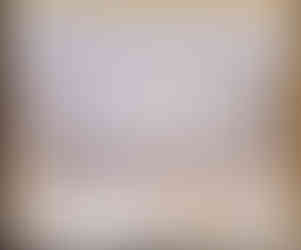








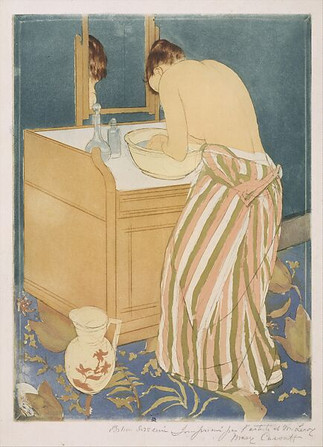





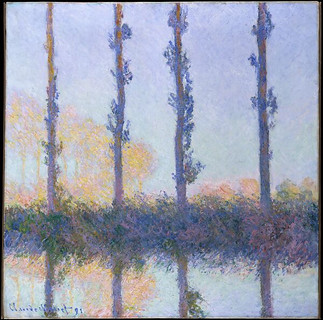


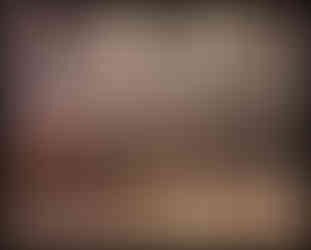



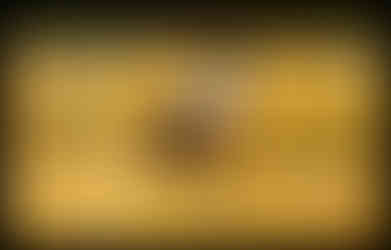




Comentarios